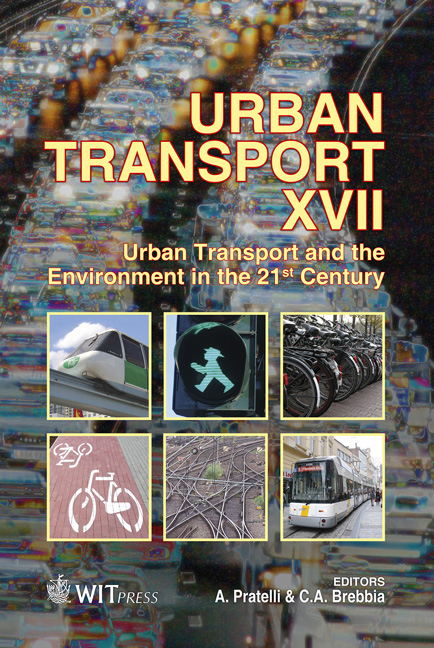Travel To School And Urban Structure In Medium And Small Sized Cities: A Case Study Of Castelo Branco
Price
Free (open access)
Transaction
Volume
116
Pages
12
Page Range
341 - 352
Published
2011
Size
3,155 kb
Paper DOI
10.2495/UT110291
Copyright
WIT Press
Author(s)
R. M. Alves, S. A. Duarte & M. I. Calcinha
Abstract
Journeys from home to school represent a significant portion of all urban commuting. A high number of citizens are involved. Not only students but parents, relatives, friends and individuals make up this group. These journeys have a relevant impact on urban environments because they correspond to the time (Peak Hour) and the spatial needs of other kinds of journeys that apply to other types of families and activities. The aim of this paper is to relate the urban zone with modal split of four schools in a medium sized Portuguese city, in aggregate form by school and by grades. These schools include children and adolescents from the 1st grade until 9th grade in a group age of 6-10 (1st - 4th grade), 10-11 (5th-6th grade) and 12-14 years old (7th - 9th grade). The differences between mobility patterns in journeys to/from school by school and by grade are evident. Walking is the main travel to school mode choice in three schools and driving in one school. Driving is the main travel to school mode choice for the students from the 1st to 6th grades and walking for the students from 7th to 9th grades. According to the results, the urban zone influences the mobility patterns in journeys to/from school, however for small and medium sized city that influence does not appear to be so evident. Keywords: built environment, scholar mobility patterns, medium and small sized cities, children, students and adolescents. 1 Introduction Several countries place particular importance on promoting sustainable urban mobility policies and physical activity on to/from school journeys. Through programs, information and awareness campaigns, targeted at students and
Keywords
built environment, scholar mobility patterns, medium and small sized cities, children, students and adolescents





